Travellers from all over the globe go to Egypt to see its historical marvels and famous sites, and the country does not disappoint. While well-known attractions like the Great Pyramid of Giza and the River Nile get all the attention, less-known but no less impressive landmarks exist. The Farafra Oasis is rare and beautiful in the middle of the Western Desert. In this post, we will dig into the fascinating history and stunning scenery of Farafra Oasis, taking you on an exciting voyage of discovery.
The History of Farafra Oasis:
The history of Farafra Oasis goes back thousands of years, and it’s interesting to learn about. It linked ancient Egypt to the rest of North Africa and was used extensively by ancient traders. Caravans passing across the Western Desert relied heavily on the oasis as a place to halt and refuel.
Don’t Miss To Check Out OurEgypt Tour Packages
Geographical Features:
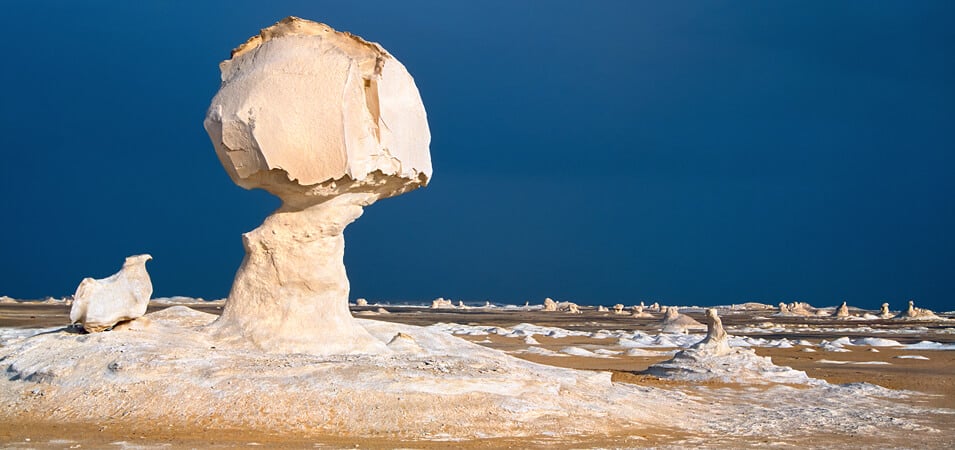
The otherworldly vistas and unusual geological formations of Farafra Oasis, located around 600 kilometers southwest of Cairo, never fail to enthrall tourists. The oasis is known for its lush palm trees, freshwater springs, and beautiful salt lakes, contrasting with its enormous dunes. The beautiful White Desert, known for its chalk-white rock formations created by wind erosion over the ages, adds to the area’s natural beauty and ruggedness.
Local Culture and Lifestyle:
The Berber-descended Farafra Bedouins are the majority of the population in Farafra Oasis. They have kept alive their customs, such as their traditional arts and crafts and regional food. Farafra Bedouins are well-known for their welcoming nature, and tourists may experience authentic Bedouin culture by fully immersing themselves in daily living.
Attractions in Farafra Oasis:
1- Ancient Village of Al-Qasr:
Step back in time as you explore the narrow streets and mud-brick houses of Al-Qasr. This well-preserved medieval village provides a glimpse into the region’s history and offers a tranquil ambience for a stroll.
2- White Desert National Park:
Prepare to be mesmerized by the ethereal beauty of the White Desert. Marvel at the dazzling white limestone formations, sculpted by nature into intricate shapes resembling mushrooms, icebergs, and other captivating figures.
3- Badr’s Museum:
Discover the artistic creations of the renowned Egyptian artist Badr Abdel Moghny. His museum showcases intricate sculptures made from the local black volcanic rock, providing a unique perspective on the fusion of art and nature.
4- Hot and Cold Springs:
Indulge in the therapeutic benefits of Farafra’s natural hot and cold springs. These mineral-rich waters are believed to have healing properties and offer a rejuvenating experience amidst the tranquil desert surroundings.
5- Crystal Mountain:
Ascend the Crystal Mountain and be enchanted by the glimmering crystals within the rocks. This geological wonder creates a magical spectacle as the sunlight reflects off the crystals, creating a sparkling display.
Activities and Experiences:
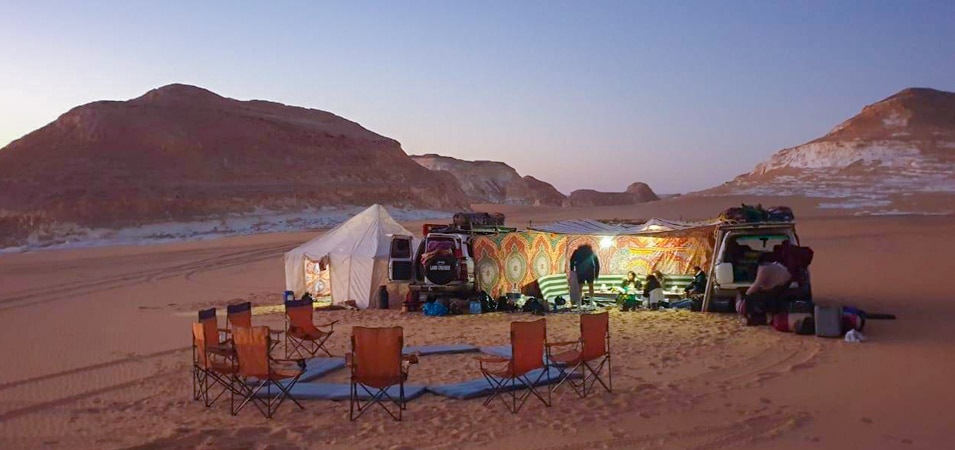
- Desert Camping and Stargazing: Spend a night under the starry desert sky, camping amidst the serenity of Farafra Oasis. The absence of light pollution allows for breathtaking stargazing experiences, where the constellations come alive in vivid detail.
- Jeep Safaris: Sandboarding Embark on thrilling jeep safaris across the golden sands of the Western Desert, exploring its hidden corners and enjoying exhilarating rides over the dunes. For adventure enthusiasts, sandboarding down the pristine slopes is an absolute must.
- Local Handicraft Workshops: Engage in hands-on experiences with the local artisans, learning the art of pottery, weaving, and other traditional crafts. Create your masterpiece and take home a souvenir of your time in Farafra.
- Relaxation at Bir Sitta Hot Spring: Unwind and recharge your senses at Bir Sitta, a natural hot spring known for its therapeutic properties. Immerse yourself in the warm waters and let the soothing ambience of the oasis wash away your worries.
- Wildlife Spotting: Farafra Oasis is home to diverse desert wildlife. Keep your eyes peeled for sightings of fennec foxes, desert hedgehogs, and various bird species. Wildlife enthusiasts will be captivated by the unique adaptations of these creatures to the arid environment.
Culinary Delights:
A trip to Farafra Oasis would be complete with sampling some local food. Try some authentic Egyptian fare like kofta (grilled meatballs), koshari (a typical Egyptian street meal), and the cool date drink called “Baladi.” Enjoy the oasis’s aromas and the regional dishes’ authentic flavors.
Best Time to Visit Farafra Oasis:
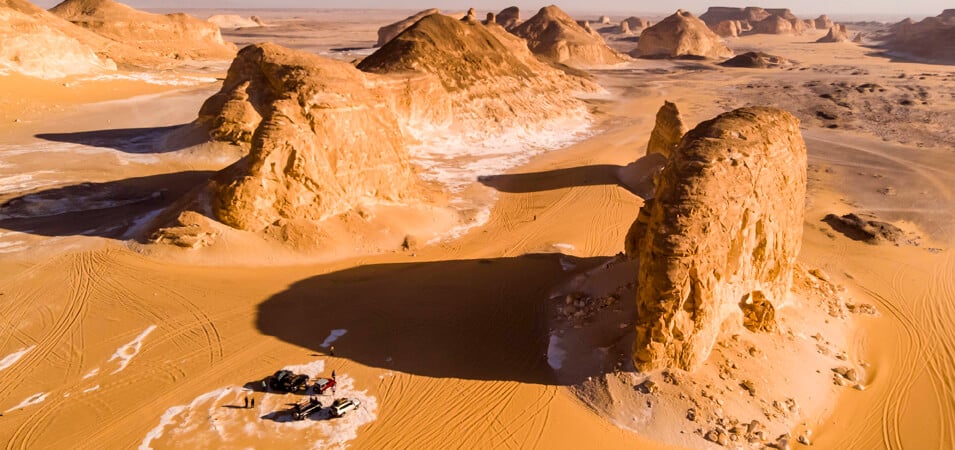
Farafra Oasis in Egypt is most pleasant during the winter months of November through February. Days are milder, averaging roughly 20 degrees Celsius (68 degrees Fahrenheit), while nights are colder still. This makes it easier to enjoy the oasis and other activities outside. Temperatures at Farafra Oasis often approach 40 degrees Celsius (104 degrees Fahrenheit) throughout the summer, notably from June to August.
Staying hydrated and taking other safety measures are essential if you plan on being outside during this period. Mild temperatures are also typical in the spring (March to May) and fall (September and October). However, check the forecast before traveling and plan appropriately since the weather may be unpredictable during these transitional seasons.
How to Get to Farafra Oasis:
To reach Farafra Oasis, you can fly into Cairo International Airport and then take a domestic flight to Assiut Airport, the closest airport to the oasis. You can hire a private car from Assiut or join a guided tour to Farafra Oasis. The journey takes approximately six to seven hours by road.
Accommodation Options:
Farafra Oasis offers a range of accommodation options to suit various budgets and preferences. From luxurious desert resorts to cozy guesthouses, you can find a place to unwind and experience the true essence of the oasis. Camping under the starlit sky is also famous for adventurous travelers seeking a closer connection with nature.
Safety Considerations:
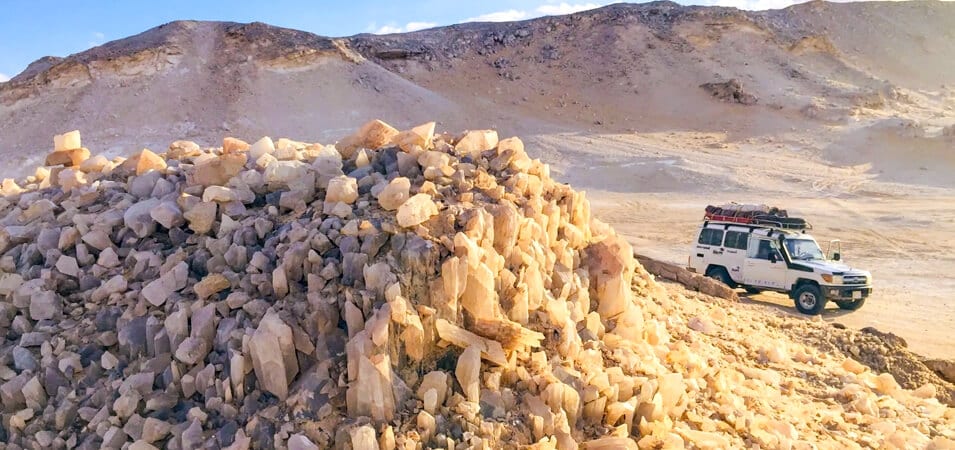
While Farafra Oasis is generally a safe destination, taking necessary precautions is essential. Carry sufficient water, sunscreen, and protective clothing, as the desert environment can be harsh. Traveling with a knowledgeable guide who can navigate remote areas and provide essential safety guidance is advisable.
Sustainable Tourism Practices:
Preserving the fragile ecosystem of Farafra Oasis is crucial for its long-term sustainability. Visitors are encouraged to practice responsible tourism by respecting the natural environment, minimizing waste, and supporting local initiatives that promote conservation. By adopting sustainable practices, we can ensure that future generations can experience this pristine oasis’s wonders.
Conclusion
Farafra Oasis in Egypt’s Western Desert offers a captivating blend of natural beauty, rich history, and warm hospitality. From exploring ancient villages to marvelling at the surreal landscapes of the White Desert, there’s no shortage of awe-inspiring experiences awaiting you. Whether you seek adventure, tranquillity, or cultural immersion, Farafra Oasis is a destination that will leave an indelible mark on your travel memories.
A related question about the Farafra Oasis:
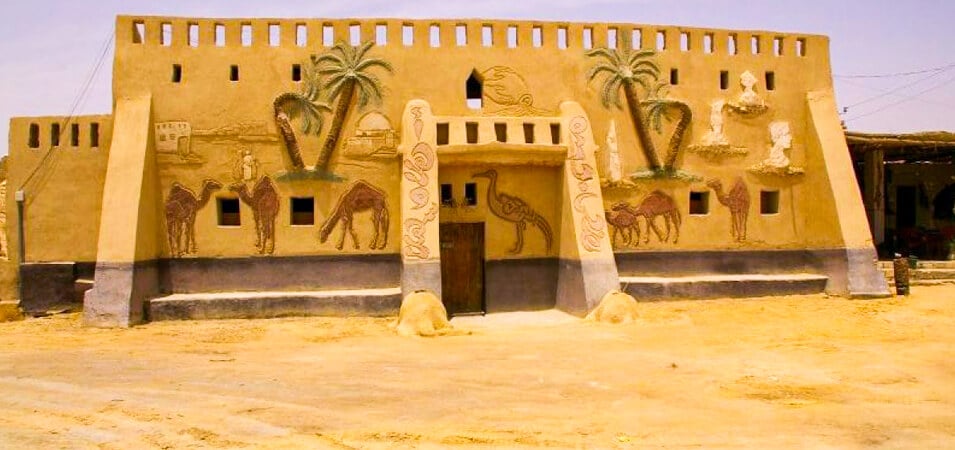
How do I reach Farafra Oasis from Cairo?
To reach Farafra Oasis from Cairo, you can take a domestic flight to Assiut Airport, the closest airport to the oasis. You can hire a private car from Assiut or join a guided tour to Farafra Oasis.
Are there any entrance fees to visit the attractions in Farafra Oasis?
Some attractions in Farafra Oasis may have nominal entrance fees, particularly national parks, and museums. It’s advisable to check with the specific interests beforehand for updated cost information.
Can I camp in the White Desert?
Yes, camping in the White Desert is a popular activity for visitors. However, obtaining the necessary permits and following guidelines is essential to ensure responsible camping and minimize environmental impact.
What is the significance of Crystal Mountain?
Crystal Mountain is renowned for the glittering crystals embedded within the rocks. These crystals are formed from the minerals in the surrounding sandstone and create a unique visual spectacle, reflecting the sunlight and enchanting visitors with their shimmering beauty.
Don’t Miss To Read Out Our Related Article:
